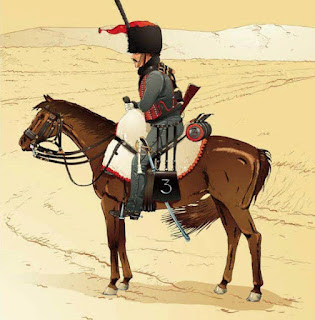Kent & Sussex Courier 9/10/1914.
He must
have made a good recovery as he was posted to the 3rd (Special
Reserve) Bn on 28th October.
This was
his old 3rd (Militia) Bn which was now a Depot/Training unit, it
moved on mobilisation to Chatham. All
those surplus to the immediate needs of the regular army battalions were posted
to the Special Reserve Bns.
On 12th November he
was appointed unpaid Lance Corporal. He
must have had some leave at Christmas because he was best man at his brother
John’s wedding on Boxing Day. They were
all living at 9 Albatross Street then.
The Second Battle of Ypres 1915.
He was posted back to France to
rejoin the 1st Bn on 24th March 1915 as a Lance Corporal. He was probably one of a draft of 65 men who joined the Battalion at Ypres on 1st April. 13th Bde was at Ypres,
temporarily in the 28th Division [84th Bde], covering for the ex-Indian Army
units which were struggling to acclimatise.
1/RWK’s helped stabilize that part of the line which the 5th
Division then took over properly on 7th April, at that time they
were doing 2 days in and 2 days out of the front line trenches.
The RWKs were in the Battle of Hill
60 on April 17th [they were the assault Battalion], and they were relieved the next day after suffering over 300
casualties.
On April 22nd they
were marching to relieve 15th Bde, but were diverted as the Germans
had launched their first major gas attack and [having created a 8,000 yard gap
in the French lines], were in danger of breaking through [Battle of St Julien].
The next day, with one hour’s
notice, no reconnaissance and next to no artillery support, the Brigade
attacked with the 1/RWK’s and KOSB’s in the lead. Their attack helped plug the gap and they dug
in until relieved the following day [they suffered over 100 casualties, about 25%
of the remains of the battalion].
From 26th to 30th
April they held the line and were subjected to several more gas attacks to
which they had no defence other than covering the mouth and nose with damp rags. They suffered another 70 casualties.
On May 5th they returned
to Hill 60, which by then had been retaken by German gas attacks. 1/RWK’s were to counter attack. A Company lead
with B in support with C and D in reserve.
They could only get as far as trench 40 and the Battalion had to pull
back, just before dawn, to Larch Wood, C Company was left to cover the position.
By now 1/RWK was a veteran unit,
it had embarked in August 1914 with 28 Officers and 1,015 ORs.
By the end of 1914 there were 2
Officers and 200 ORs left of the “Originals”.
By 11th November 1918,
there were no Officers and less than 40 ORs.
Alfred reported sick on May 24th 1915 and was
sent home on June 6th, this time he had done 54 days at the front.
He was admitted to the 2nd London General
Hospital TF [St Marks College, 552 Kings Road, Chelsea], on June 8th
and a medical report dated July 1st recommended him for a discharge
as he was suffering so badly from TB aggravated by the gas attacks.
His records say he was discharged on 15th August
1915 as no longer fit for war service, his rank by then was Corporal.
 |
2nd London General Hospital.
|
He died 30th March 1916 aged 32 at Firs Home, a
sanatorium in Bournemouth. He was listed
as an army pensioner and died from TB and Toxaemia.
He was buried 7th April in Plumstead Cemetery,
grave B.1533.
| 

















No comments:
Post a Comment